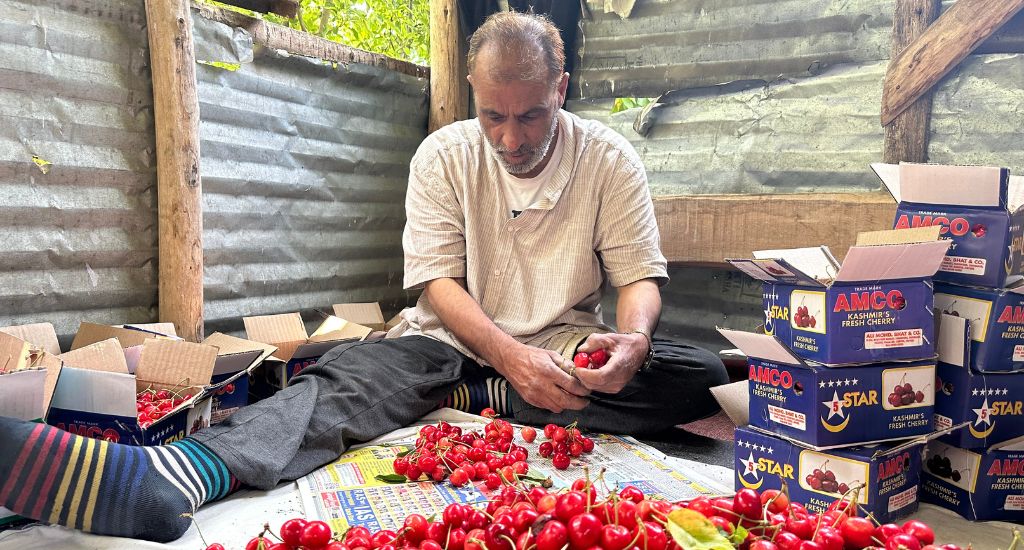
Kashmir’s cherry farmers battle nature’s fury
Despite the introduction of new varieties and advanced techniques, untimely rainfall has significantly impacted cherry growers in the Valley, affecting their crop after a harsh winter.

Despite the introduction of new varieties and advanced techniques, untimely rainfall has significantly impacted cherry growers in the Valley, affecting their crop after a harsh winter.
Traditional cherry cultivation thrives in Srinagar’s Dara, Harwan, and Shalimar areas, where skilled orchardists have honed their craft for generations. The cherry-picking season brings forth a vibrant period showing nature’s splendour. However, this year’s persistent rain in April and May has presented a tremendous challenge for cherry farmers in Kashmir.
Despite the introduction of new varieties and advanced techniques that have fostered growth in the industry, adverse weather conditions and untimely rainfall have significantly impacted cherry growers in the region, affecting their crops after a harsh winter.
Abdul Ahad Mir, a seasoned cherry grower from Harwan, expressed his disappointment, citing a 30 percent loss due to the inclement weather.
“The farmers were hoping for a bountiful crop but the sporadic rain and hail storms during harvesting season proved to be harmful,” he said.
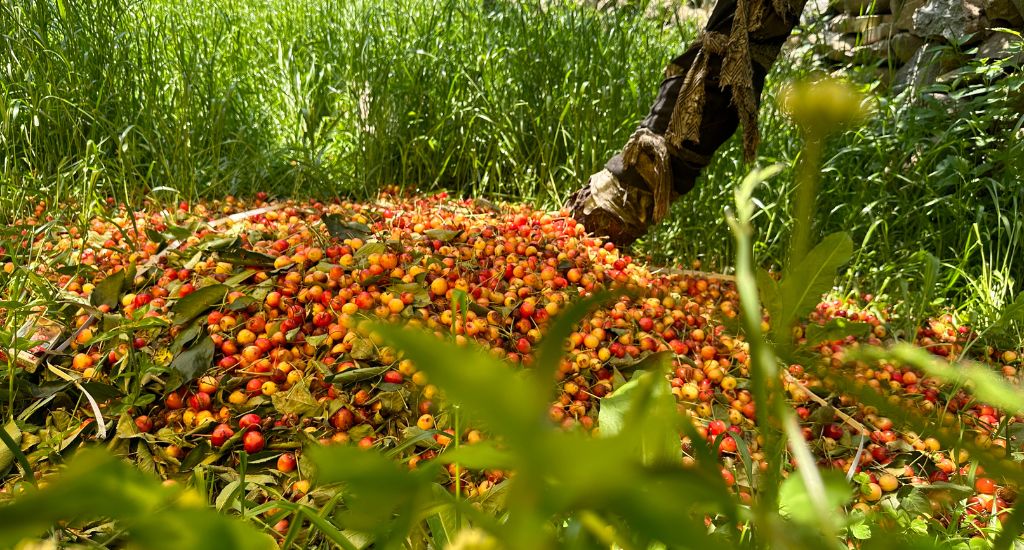
The untimely arrival of heavy rain wreaked havoc on the cherry plants during their crucial flowering and fruiting stage. Delicate cherry blossoms, usually a promising sign of a fruitful harvest, were washed away prematurely by relentless downpour, leading to significant damage to the fruit.
Aisha Bano, a cherry farmer in Dara, expressed the pain of witnessing the failure of cherry blossoms to bloom and then seeing them fall to the ground. “The constant rain destroyed our hopes for a great season,” she said.
Also Read | Kashmir’s cherry farmers face the impact of pandemic
The prolonged rainfall also created favourable conditions for fungal diseases, adding to the challenges faced by cherry farmers. Cherry trees and fruits suffered widespread decay and rot, showing the unpredictable fate of agriculture.
“It felt like everything we had worked for was slipping away,” lamented Bashir Malik, a cherry farmer in Harwan.
Mohammad Shafi Dar, a cherry farmer from Shalimar, had rented a farm for Rs 2.50 lakh, but he now faces the harsh truth of being unable to recover even Rs 50,000 from his investment.
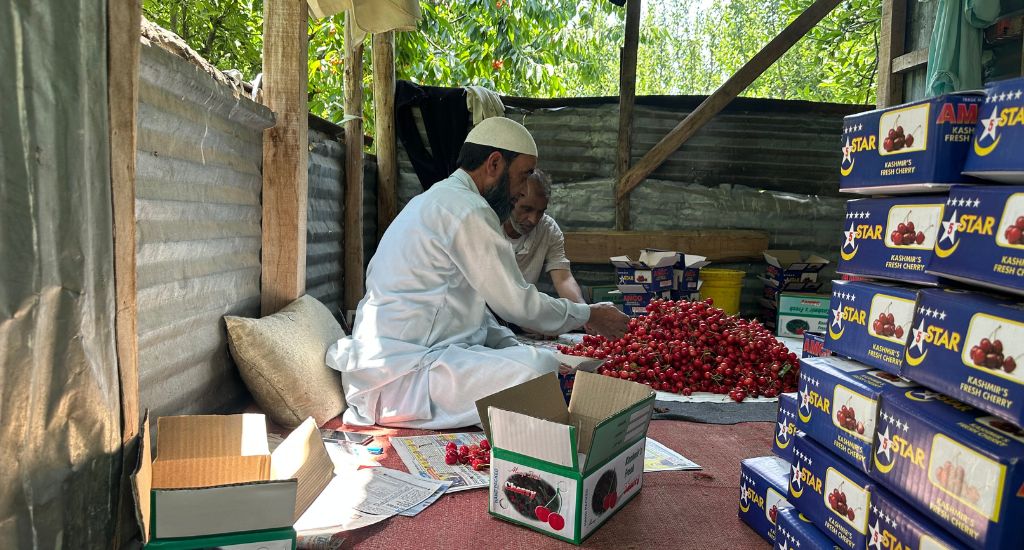
The farmers also say that lack of support from the horticulture department has deprived them of access to alternative cherry plant varieties.
“This year’s cherry crop was earlier valued at Rs 200-250 per kilogram. But the selling price finally plummeted to Rs 100 a kg due to fungal infections that rendered the fruit unsellable. The financial losses incurred by the farmers are substantial, forcing some to abandon their orchards,” Dar added.
Another cherry farmer from Dara, Haji Akram, however, had a different story to tell.
“In the past, our cherry variety options were limited to Avval, Italy, Mishry, Makhmaly, Double and Hybrid. However, with the guidance of a horticulture officer, I introduced Australian cherry trees to my orchard and I was able to sell the fruit for Rs 250-300 a box,” he said. However, the rain this year resulted in nearly 50 percent of his crop also getting damaged.
More than a dozen cherry varieties are cultivated in Kashmir, of which all these varieties, except Dabal, develop a stunning red colour during ripening, which is sought after in regions like Maharashtra and Delhi.
Also Read | Kashmir’s plum no longer a plum crop for farmers
After devoting two decades to his orchard, Muzaffar Ahmad now faces a nightmare. He used to gather 200 boxes of cherries annually, but now he manages only 25 boxes.
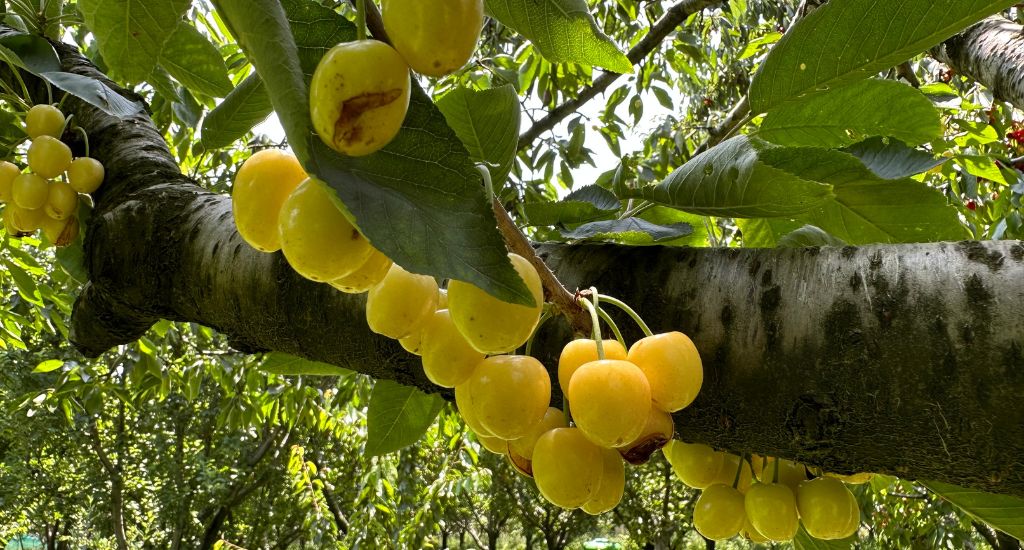
“I used to employ four workers on my farm, and I have to pay their salaries despite the lack of substantial profits,” he said. “The Double and Italian cherries always held the highest position among the various cherry varieties that flourish here due to their abundant harvest. But the whims of nature haven’t spared anything.”
The untimely rainfall during April and May has posed a threat to the livelihoods of cherry farmers across the Kashmir region, said Sonum Lotus, director, Meteorological Department of Jammu and Kashmir.
“Instead of the typical transition from winter to spring with decreasing precipitation, the region experienced repeated Western Disturbances, leading to above-average rainfall. Srinagar and Qazigund received 146mm and 167mm of rain, respectively, compared to 91mm and 116mm in March. As temperatures gradually rose during this transitional period, localised thunderstorms and hailstorms became more frequent, posing a threat to plants,” Lotus said.
According to horticulture director Mohd Amin Bhat, the department has imported new cherry varieties from European countries that are largely resistant to rain, thus addressing the issue of cracking faced by traditional varieties after rainfall.
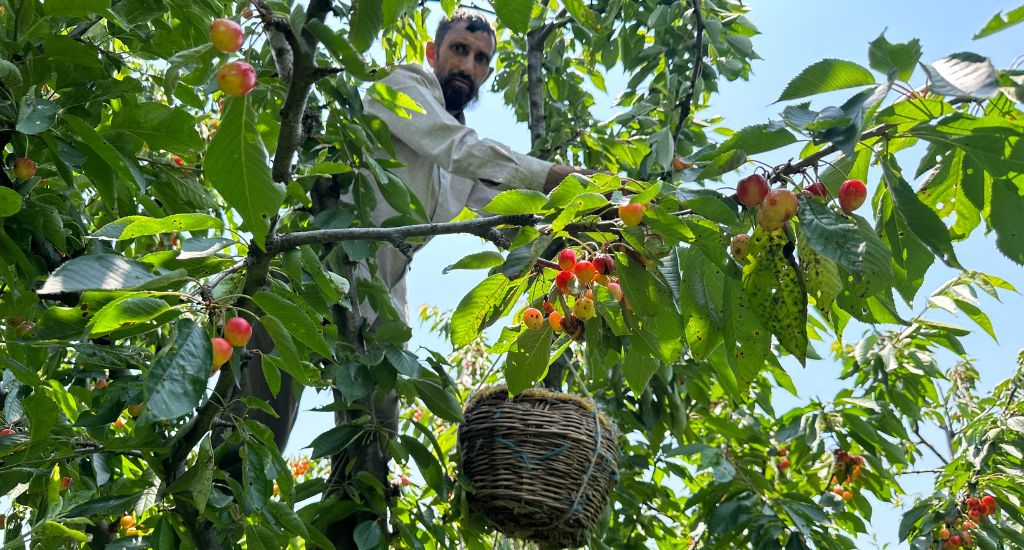
“The significance of cherries in Kashmir’s horticulture sector, especially following the strawberry harvest, cannot be emphasised enough. In Srinagar district alone, cherries are cultivated across 333 hectares of land, resulting in an impressive yield of around 3,000 metric tons. This highlights the economic and cultural importance of cherries in the Valley,” Bhat said, adding that the department has incorporated the cherry crop into the Revised High-Density Plantation Scheme and plans to expand the cultivation area with new varieties.
The government is also ready to provide assistance to farmers for transporting and marketing their produce.
“Currently, we are marketing the early season fruits and offering a 25 percent subsidy to farmers for air transportation. We also have plans to collaborate with entrepreneurs for marketing initiatives,” Bhat said.
Also Read | Kashmir’s cricket bats go global, give English willow a run for its money
The lead image shows a cherry grower sorting the crop of cherry this season. (Photo by Fahim Mattoo)
Fahim Mattoo and Sadaf Shabir are Srinagar-based journalists.